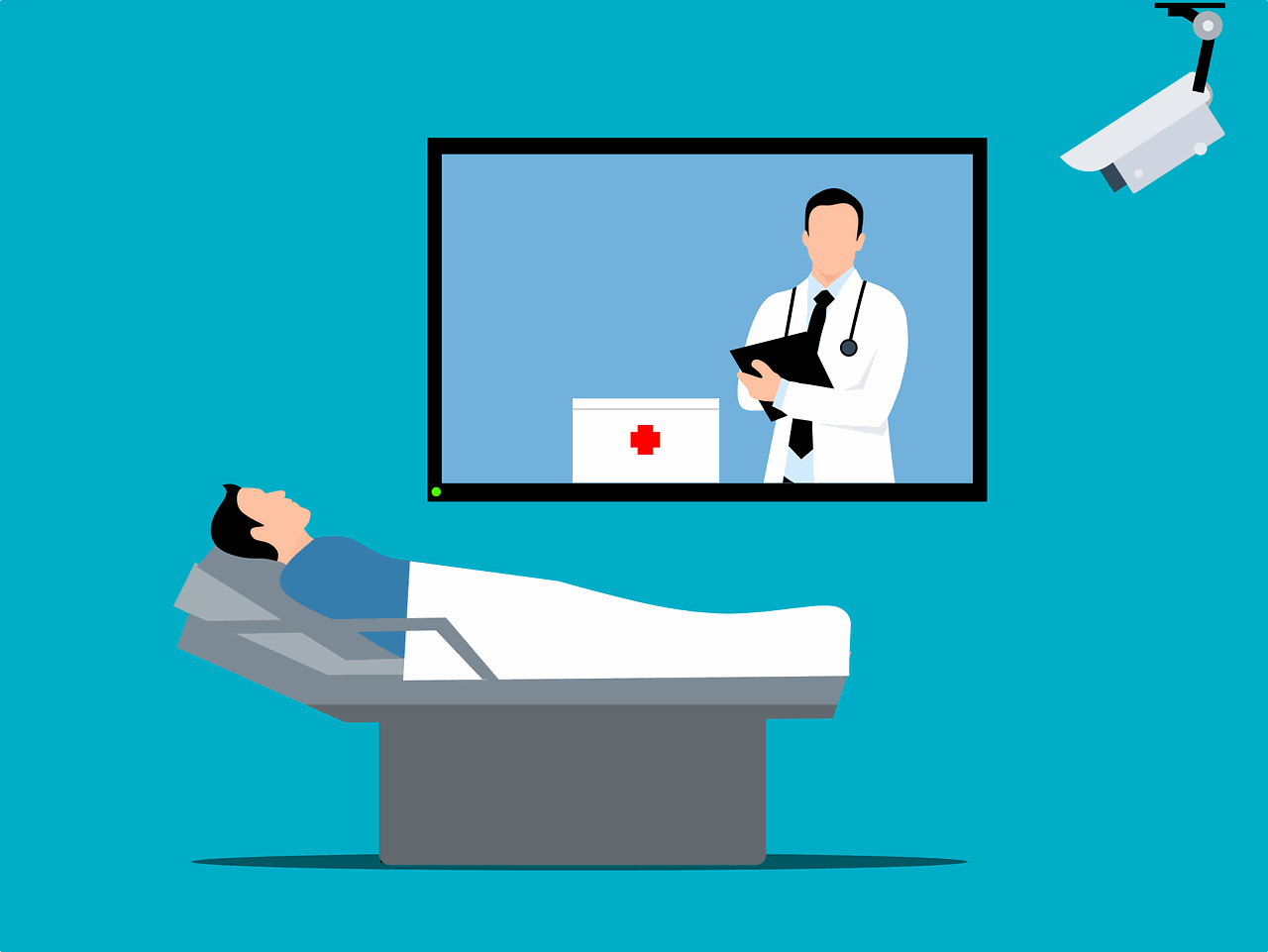
By Debbie Bunch
April 1, 2024
Telehealth lingered on the sidelines for a decade or longer before the pandemic hit, but COVID-19 changed the playing field for this technology markedly as people sought ways to receive health care without leaving their homes.
What’s happening in this area today, and what are the job prospects for respiratory therapists? According to the AARC members we talked to, the future looks fairly bright.
Opportunities are growing
Bradley Boynton, RRT, who works at the Mayo Clinic in Rochester, MN, has been involved with telehealth in the ambulatory setting since the pandemic and today spends about 10-15% of his time using the technology to make virtual ALS visits, pediatric pulmonary ambulatory visits, adult bronchiectasis ambulatory visits, and home spirometry. A secure form of ZOOM is used to connect with patients.
Boynton has high hopes for the future of telehealth in the respiratory care profession. “I believe telehealth will only continue to grow for RTs, as outpatient/ambulatory RT practices continue to grow,” he said.
Jamie Akers, RRT, RRT-ACCS, sees a bright future too, especially if legislation currently in Congress continues to move forward and telehealth services receive adequate reimbursement. She believes pulmonary rehabilitation is one area poised to reap big rewards.
“If CMS begins to cover virtual pulmonary rehab, it will become a popular option for many patients,” she said. “Patients in rural areas with no options to attend in person will also benefit greatly with this service.”
Her hospital, Tampa General in Tampa, FL, began offering virtual PR during the pandemic but had to stop when funding ran out. But that hasn’t deterred them from forging ahead.
“We are a major lung transplant center and have a large lung transplant/pulmonary disease clinic here, so we have recently started offering a self-paid virtual option for those patients that are referred to pulmonary rehab but live outside our area or that have transportation issues,” explained Akers. “We are currently offering two visits a week, one hour each visit.”
A complete program
Akers says they had five patients in March, and she was able to work those visits into the normal Tuesday/Thursday pulmonary rehabilitation schedule. “As we schedule more patients, I will move those two days to Monday/Wednesday and have one full time person providing that service,” she said.
Tampa General uses Microsoft Teams or Doximity to host the visits, and all the patients must have a pulse oximeter on hand. They check the pulse ox after each exercise session, along with blood pressure if the patient has a blood pressure machine.
“Once enrolled, I mail a packet to the patient that has a pulmonary rehab exercise book we had made, an exercise band, a pedometer, and the questionnaires we use for our measures,” said Boynton. “This also contains an instruction page with screen shots of each step to connect.”
Patients must pass the 4-stage balance test from the CDC website during their evaluation and Boynton also conducts a 30-second sit-to-stand test that she uses in place of the 6-minute walk test as another measure. “We also make sure there is someone home with them during the visit,” she said. “If there is not, we ask that they leave a door unlocked in the event we should need to call 911.”
Remote patient monitoring
As a clinical liaison at Spire Health, Scott Prater, RRT, RRT-NPS, CPFT, NRP, CMTE, spends eight hours a day working with patients via remote monitoring. Patients wear the company’s monitoring device on an undergarment, allowing Prater and other members of the telehealth team to keep track of their respiratory rate, pulse rate, and activity. Some patients take part in a virtual pulmonary rehabilitation program, as well.
“We use what we call a Home Hub,” explained Prater. “It serves as the transmitter for data and is used as the platform for exercise videos.” The Home Hub allows patients to interact with caregivers and they can also set their own activity goals and complete them on their own schedule.
“We follow up with either a weekly or bi-weekly ‘check in’ call to review their activity,” he said.
Like his colleagues, Prater sees growing opportunities for RTs in telehealth. “With the shift from fee for service to value-based care with CMS, remote patient monitoring will be a key factor to ensure patients are treated sooner,” he said. “This should help keep them out of a costly hospital admission.”
The addition of more “hospital at home” programs will increase the need for remote patient monitoring too, according to Prater.
Expanding the service
Wayne Barfield, RRT, is an RT in the cystic fibrosis, bronchiectasis, and nontuberculous mycobacteria clinics at the Medical University of South Carolina in Charleston. “I originally started using telehealth in our cystic fibrosis clinics, and eventually, we realized our opportunities and expanded to other diseases,” he said.
Telehealth is used to follow-up with patients on the decisions and changes that were discussed during the in-person visit, an important aspect to care, says Barfield, especially when equipment and/or medications are delayed in getting to the patient.
“Unfortunately, with delays, some patients forget what they are taught in the clinic,” he said. “Telehealth allows me to see them in their home setting and will enable us to see if there are any limitations or obstacles that may be present.”
Telehealth also gives clinicians the chance to answer any questions the patient may be having about their therapy, cleaning of equipment, or ordering more supplies. The team, which uses the Doximity platform because they feel it helps them better manage their multidisciplinary approach, views telehealth as a way to intervene in a timely manner, with an eye toward decreasing readmissions and emergency department visits.
Patients love it
Barfield says his patients love the option because telehealth reduces travel time and the associated headaches that come with it, especially for patients on supplemental oxygen who have to travel long distances to get to the clinic.
“Our state has many rural areas with limited access to resources,” he said. “This method helps us step in before issues become worse.”
He estimates he spends about 25% of his working day utilizing telehealth and believes RTs have just scratched the surface when it comes to what they have to offer to the telehealth arena.
“Think of the asthma and COPD management and education we could provide. Telemedicine also helps us get into the schools to educate students and educators looking for ways to help manage lung disease,” said Barfield. “Our future looks bright as long as we get insurance and legislative efforts to include the RT when looking at various health care bills.”
Getting creative
Telehealth may still be a new frontier in health care, but as the experiences of these therapists show, RTs are forging their path.
Wayne Barfield may have summed it up best. “Pulmonary disease management is what we are good at. With an increasing number of pulmonary patients, we must continue to explore creative ways to be involved with disease management,” he said.
Telehealth is a great way to get creative.






